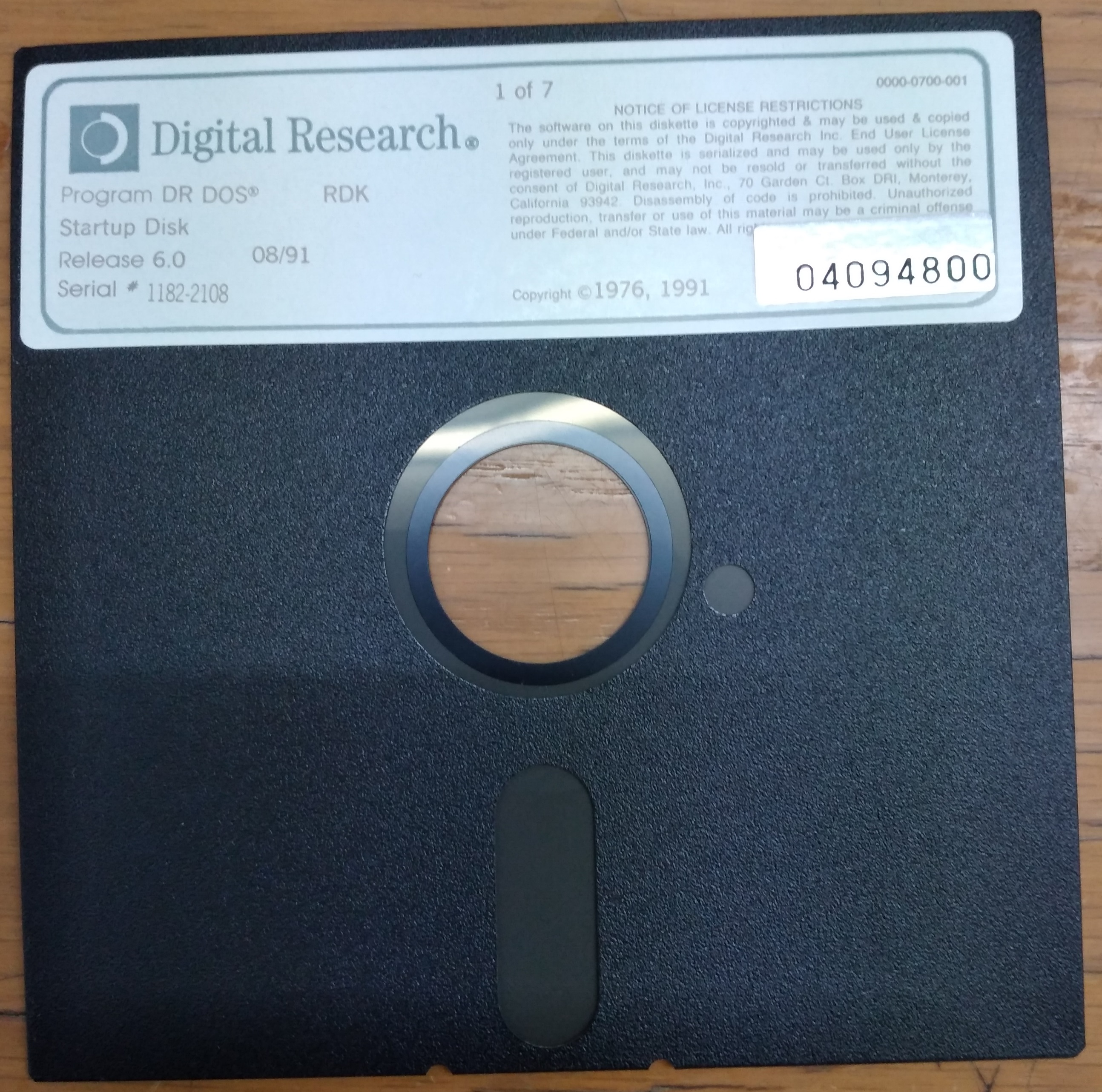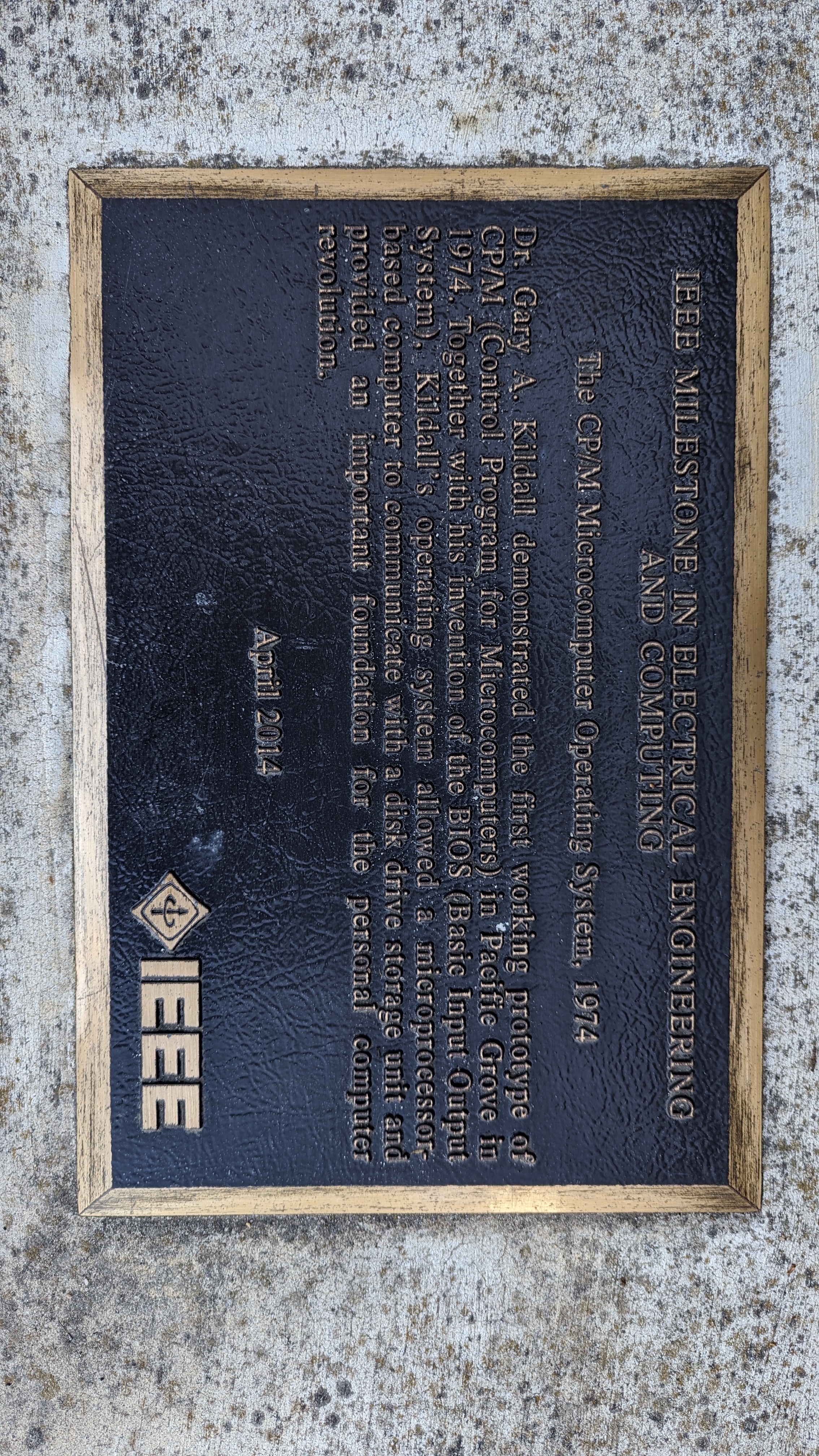|
IBMDOS.COM
IBMDOS.COM is the filename of the IBM PC DOS and DR-DOS kernel. Loaded and initially invoked by the DOS BIOS in IBMBIO.COM during the boot process, it contains the hardware-independent parts of the operating system, including the embedded FAT12, FAT16 and, in newer versions, the FAT32 file system code, as well as the code to provide the DOS API to applications. The file exists in PC DOS 1.0 to 7.10 and DR DOS 5.0 and higher (except for DR-DOS 7.06), with MS-DOS using MSDOS.SYS (from version 1.10 to 6.22) for the same purpose. DR DOS 3.31 to 3.41 used the equivalent DRBDOS.SYS file instead. (For compatibility purposes with some DOS applications the IBMDOS.COM file name was briefly also used by the IBM version of OS/2 1.0, where it resembled the OS2DOS.COM OS/2 kernel file as used by Microsoft.) By default, the file is located in the root directory of the bootable drive/partition (normally C:\) and has the ''hidden'', ''read-only'', and ''system'' file attrib ... [...More Info...] [...Related Items...] OR: [Wikipedia] [Google] [Baidu] |
DR-DOS
DR-DOS is a disk operating system for IBM PC compatibles, originally developed by Gary A. Kildall's Digital Research, Inc. and derived from Concurrent PC DOS 6.0, which was an advanced successor of CP/M-86. Upon its introduction in 1988, it was the first DOS that attempted to be compatible with IBM PC DOS and MS-DOS. Its first release was version 3.31, named so that it would match MS-DOS's then-current version. DR DOS 5.0 was released in 1990 as the first to be sold in retail; it was critically acclaimed and led to DR DOS becoming the main rival to Microsoft's MS-DOS, who quickly responded with its own MS-DOS 5.0 but releasing over a year later. It introduced a graphical user interface layer called ViewMAX. DR DOS 6.0 was released in 1991; then with Novell's acquisition of Digital Research, the following version was named Novell DOS 7.0 in 1994. After another sale, to Caldera, updated versions were released partly open-source under the Caldera moniker, and briefly as ... [...More Info...] [...Related Items...] OR: [Wikipedia] [Google] [Baidu] |
DR-DOS 7
DR-DOS is a disk operating system for IBM PC compatibles, originally developed by Gary A. Kildall's Digital Research, Inc. and derived from Concurrent PC DOS 6.0, which was an advanced successor of CP/M-86. Upon its introduction in 1988, it was the first DOS that attempted to be compatible with IBM PC DOS and MS-DOS. Its first release was version 3.31, named so that it would match MS-DOS's then-current version. DR DOS 5.0 was released in 1990 as the first to be sold in retail; it was critically acclaimed and led to DR DOS becoming the main rival to Microsoft's MS-DOS, who quickly responded with its own MS-DOS 5.0 but releasing over a year later. It introduced a graphical user interface layer called ViewMAX. DR DOS 6.0 was released in 1991; then with Novell's acquisition of Digital Research, the following version was named Novell DOS 7.0 in 1994. After another sale, to Caldera, updated versions were released partly open-source under the Caldera moniker, and briefly as Open ... [...More Info...] [...Related Items...] OR: [Wikipedia] [Google] [Baidu] |
Fat Binary
A fat binary (or multiarchitecture binary) is a computer executable program or library which has been expanded (or "fattened") with code native to multiple instruction sets which can consequently be run on multiple processor types. This results in a file larger than a normal one-architecture binary file, thus the name. The usual method of implementation is to include a version of the machine code for each instruction set, preceded by a single entry point with code compatible with all operating systems, which executes a jump to the appropriate section. Alternative implementations store different executables in different forks, each with its own entry point that is directly used by the operating system. The use of fat binaries is not common in operating system software; there are several alternatives to solve the same problem, such as the use of an installer program to choose an architecture-specific binary at install time (such as with Android multiple APKs), selecting an archi ... [...More Info...] [...Related Items...] OR: [Wikipedia] [Google] [Baidu] |
PC DOS 7
IBM PC DOS (an acronym for IBM Personal Computer Disk Operating System),Formally known as "The IBM Personal Computer DOS" from versions 1.0 through 3.30, as reported in those versions' respective COMMAND.COM outputs also known as PC DOS or IBM DOS, is a discontinued disk operating system for the IBM Personal Computer, its successors, and IBM PC compatibles. It was sold by IBM from the early 1980s into the 2000s. Developed by Microsoft, it was also sold by that company to the open market as MS-DOS. Both operating systems were identical or almost identical until 1993, when IBM began selling PC DOS 6.1 with its own new features. The collective shorthand for PC DOS and MS-DOS was DOS, which is also the generic term for disk operating system, and is shared with dozens of disk operating systems called DOS. History The IBM task force assembled to develop the IBM PC decided that critical components of the machine, including the operating system, would come from outside vendors. This ra ... [...More Info...] [...Related Items...] OR: [Wikipedia] [Google] [Baidu] |
Gary Kildall
Gary Arlen Kildall (; May 19, 1942 – July 11, 1994) was an American computer scientist and microcomputer entrepreneur. During the 1970s, Kildall created the CP/M operating system among other operating systems and programming tools, and subsequently founded Digital Research, Digital Research, Inc. to market and sell his software products. He is considered a list of pioneers in computer science, pioneer of the History of personal computers, personal computer revolution. In 1974 in Pacific Grove, California, Pacific Grove, California, Kildall demonstrated the first working prototype of CP/M, which would go on to become the dominant operating system on microcomputers. Together with his invention of the BIOS (Basic Input Output System), his operating system allowed a microprocessor-based computer to communicate with a disk storage. Kildall was among the earliest individuals to recognize microprocessors as fully capable computers. During the 1980s, Kildall also appeared on PBS ... [...More Info...] [...Related Items...] OR: [Wikipedia] [Google] [Baidu] |
Basic Disk Operating System
CP/M, originally standing for Control Program/Monitor and later Control Program for Microcomputers, is a mass-market operating system created in 1974 for Intel 8080/ 85-based microcomputers by Gary Kildall of Digital Research, Inc. CP/M is a disk operating system and its purpose is to organize files on a magnetic storage medium, and to load and run programs stored on a disk. Initially confined to single-tasking on 8-bit processors and no more than 64 kilobytes of memory, later versions of CP/M added multi-user variations and were migrated to 16-bit processors. CP/M's core components are the ''Basic Input/Output System'' (BIOS), the ''Basic Disk Operating System'' (BDOS), and the ''Console Command Processor'' (CCP). The BIOS consists of drivers that deal with devices and system hardware. The BDOS implements the file system and provides system services to applications. The CCP is the command-line interpreter and provides some built-in commands. CP/M eventually became the '' ... [...More Info...] [...Related Items...] OR: [Wikipedia] [Google] [Baidu] |
Microsoft
Microsoft Corporation is an American multinational corporation and technology company, technology conglomerate headquartered in Redmond, Washington. Founded in 1975, the company became influential in the History of personal computers#The early 1980s and home computers, rise of personal computers through software like Windows, and the company has since expanded to Internet services, cloud computing, video gaming and other fields. Microsoft is the List of the largest software companies, largest software maker, one of the Trillion-dollar company, most valuable public U.S. companies, and one of the List of most valuable brands, most valuable brands globally. Microsoft was founded by Bill Gates and Paul Allen to develop and sell BASIC interpreters for the Altair 8800. It rose to dominate the personal computer operating system market with MS-DOS in the mid-1980s, followed by Windows. During the 41 years from 1980 to 2021 Microsoft released 9 versions of MS-DOS with a median frequen ... [...More Info...] [...Related Items...] OR: [Wikipedia] [Google] [Baidu] |
Digital Research
Digital Research, Inc. (DR or DRI) was a privately held American software company created by Gary Kildall to market and develop his CP/M operating system and related 8-bit, 16-bit and 32-bit systems like MP/M, Concurrent DOS, FlexOS, Multiuser DOS, DOS Plus, DR DOS and Graphics Environment Manager, GEM. It was the first large software company in the microcomputer world. Digital Research was originally based in Pacific Grove, California, later in Monterey, California. History 1974–1979: Founding and incorporation In 1972, Gary Kildall, an instructor at the Naval Postgraduate School in Monterey, California, began working at Intel as a consultant under the business name Microcomputer Applications Associates (MAA). By 1974, he had developed Control Program/Monitor, or CP/M, the first disk operating system for microcomputers. In 1974 he incorporated as Intergalactic Digital Research, with his wife handling the business side of the operation. The company soon began opera ... [...More Info...] [...Related Items...] OR: [Wikipedia] [Google] [Baidu] |
BDOS (CP/M)
CP/M, originally standing for Control Program/Monitor and later Control Program for Microcomputers, is a mass-market operating system created in 1974 for Intel 8080/ 85-based microcomputers by Gary Kildall of Digital Research, Inc. CP/M is a disk operating system and its purpose is to organize files on a magnetic storage medium, and to load and run programs stored on a disk. Initially confined to single-tasking on 8-bit processors and no more than 64 kilobytes of memory, later versions of CP/M added multi-user variations and were migrated to 16-bit processors. CP/M's core components are the ''Basic Input/Output System'' (BIOS), the ''Basic Disk Operating System'' (BDOS), and the ''Console Command Processor'' (CCP). The BIOS consists of drivers that deal with devices and system hardware. The BDOS implements the file system and provides system services to applications. The CCP is the command-line interpreter and provides some built-in commands. CP/M eventually became the ' ... [...More Info...] [...Related Items...] OR: [Wikipedia] [Google] [Baidu] |
Concurrent DOS 286
Multiuser DOS is a real-time multi-user multi-tasking operating system for IBM PC-compatible microcomputers. An evolution of the older Concurrent CP/M-86, Concurrent DOS and Concurrent DOS 386 operating systems, it was originally developed by Digital Research and acquired and further developed by Novell in 1991. Its ancestry lies in the earlier Digital Research 8-bit operating systems CP/M and MP/M, and the 16-bit single-tasking CP/M-86 which evolved from CP/M. When Novell abandoned Multiuser DOS in 1992, the three master value-added resellers (VARs) DataPac Australasia, Concurrent Controls and Intelligent Micro Software were allowed to take over and continued independent development into Datapac Multiuser DOS and System Manager, CCI Multiuser DOS, and IMS Multiuser DOS and REAL/32. The FlexOS line, which evolved from Concurrent DOS 286 and Concurrent DOS 68K, was sold off to Integrated Systems, Inc. (ISI) in July 1994. Concurrent CP/M-86 The initial version of CP ... [...More Info...] [...Related Items...] OR: [Wikipedia] [Google] [Baidu] |









